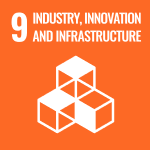Vehicle-to-Vehicle Communications with Urban Intersection Path Loss Models
Document Type
Conference Proceeding
Publication Date
12-2016
Keywords
ITS, V2X, V2V, C-V2X, DSRC, VANET, 802.11p, 5G, LOS, WLOS, NLOS, CAV, URLLC, H2020, intelligent transportation system, connected vehicles, vehicle-to-everything, vehicle-to-vehicle, dedicated short-range communication, vehicular ad hoc network, path loss, propagation model, channel model, connected vehicle, autonomous vehicle, connected and autonomous vehicle, outage probability, reliability, ultra-reliable low-latency communication, stochastic geometry, meta distribution, road safety, traffic efficiency, urban intersection, suburban intersection, smart intersection, intelligent intersection, smart city, research funding, government funding, MSCA, Marie-Curie, Marie Skłodowska Curie Action
Abstract
Vehicle-to-vehicle (V2V) communication can improve road safety and traffic efficiency, particularly around critical areas such as intersections. We analytically derive V2V success probability near an urban intersection, based on empirically supported line-of-sight (LOS), weak-line-of-sight (WLOS), and non-line-of-sight (NLOS) channel models. The analysis can serve as a preliminary design tool for performance assessment over different system parameters and target performance requirements.
Faculty
Faculty of Applied Science and Technology (FAST)
Copyright
© Abdulla, Steinmetz & Wymeersch 2016
Terms of Use
Terms of Use for Works posted in SOURCE.
Creative Commons License

This work is licensed under a Creative Commons Attribution-Noncommercial-No Derivative Works 4.0 License.
SOURCE Citation
Abdulla, Mouhamed; Steinmetz, Erik; and Wymeersch, Henk, "Vehicle-to-Vehicle Communications with Urban Intersection Path Loss Models" (2016). Publications and Scholarship. 33.
https://source.sheridancollege.ca/fast_publications/33


